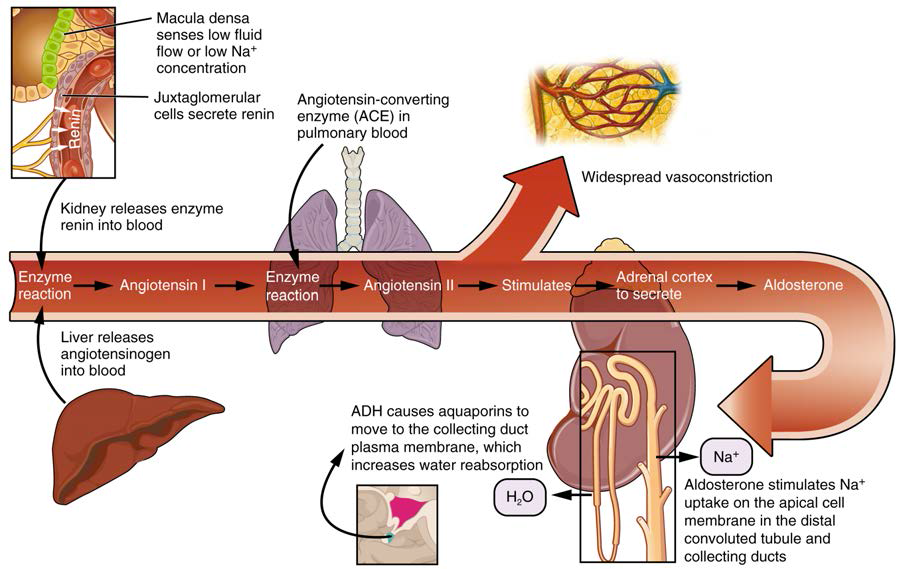WBR0516
| Author | [[PageAuthor::Gonzalo A. Romero, M.D. [1]]] |
|---|---|
| Exam Type | ExamType::USMLE Step 1 |
| Main Category | MainCategory::Physiology |
| Sub Category | SubCategory::Renal, SubCategory::Vascular |
| Prompt | [[Prompt::4. A woman delivers a 38-week-old boy after a non-controlled pregnancy. She is a known hypertensive woman who takes enalapril to control her blood pressure. She assisted to her first trimester control, when the physician told her that it was necessary for her to stop her medication because it was associated with many fetal problems. Regardless of the medical advice she continued taking enalapril. The newborn is suspected to have some malformations and renal damage after the chronic in-utero exposure to this drug. Which of the following changes in an adult kidney physiology occurs with the use of enalapril?]] |
| Answer A | AnswerA::Increase in FF, increase in GFR and decrease in RPF |
| Answer A Explanation | [[AnswerAExp::Incorrect.]] |
| Answer B | AnswerB::Decrease FF, decrease GFR and increase RPF |
| Answer B Explanation | [[AnswerBExp::Correct.]] |
| Answer C | AnswerC::No change in FF, decrease in GFR and decrease in RPF |
| Answer C Explanation | [[AnswerCExp::Incorrect.]] |
| Answer D | AnswerD::Increase in FF, Increase in GFR and no change in RPF |
| Answer D Explanation | [[AnswerDExp::Incorrect.]] |
| Answer E | AnswerE::Decrease in FF, decrease in GFR and no change RPF |
| Answer E Explanation | [[AnswerEExp::Incorrect.]] |
| Right Answer | RightAnswer::B |
| Explanation | [[Explanation::Enalapril is an ACE (angiotensin converting enzyme) inhibitor medication used to treat hypertension. It is associated with many fetal malformations if used during pregnancy (teratogenic), especially renal damage. Normally angiotensin II (AT-II) constricts the glomerular efferent arteriole, which causes an increase in the hydrostatic pressure within the glomerulus, which increases the glomerular filtration rate (GFR). AT-II by constricting the efferent arteriole, decreases the renal plasma flow (RPF). By decreasing RPF and increasing GFR, AT-II increases the filtration fraction (FF), which is GFR/RPF. ACE inhibitors such as enalapril, decrease AT-II which cause the inverse effect, therefore by inhibiting the production of angiotensin II (AT-II), it decreases the FF by dilating the efferent arteriole. With enalapril the hydrostatic pressure within the glomerulus decreases, which decreases GFR. By decreasing the resistance in the efferent arteriole, the renal plasma flow increases, which ultimately leads to decrease in filtration fraction. ACE inhibitors are contraindicated in patients with renal artery stenosis, because the blood flow decreases even more and the filtration fraction decreases, therefore the patient is prone to develop renal insufficiency.
 Educational Objective:
|
| Approved | Approved::Yes |
| Keyword | WBRKeyword::Filtration fraction, WBRKeyword::GFR, WBRKeyword::ACE inhibitor, WBRKeyword::enalapril |
| Linked Question | Linked:: |
| Order in Linked Questions | LinkedOrder:: |